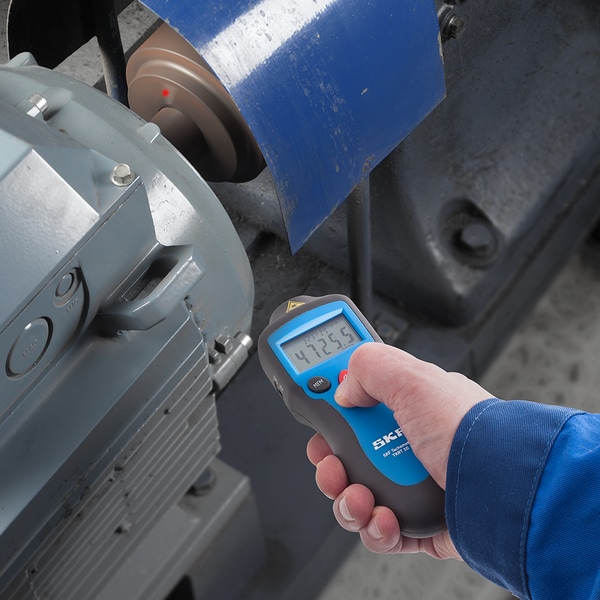Expert Tips for Keeping and Adjusting Your Tachometer
Expert Tips for Keeping and Adjusting Your Tachometer
Blog Article
The Value of a Tachometer in Keeping An Eye On Engine Rate and Efficiency in Automotive Applications
In the realm of vehicle design, the tachometer stands as an essential tool in the driver's collection, supplying a straight home window into the inner functions of a car's engine. Beyond its feature as a simple gauge of changes per minute (RPM), the tachometer works as an important device for fanatics and professionals alike, providing real-time understandings into engine efficiency and wellness. Understanding the importance of this gadget surpasses surface-level monitorings, diving into the detailed relationship between engine speed, power outcome, and general driving experience. As we explore the diverse duty of the tachometer in automotive applications, a deeper recognition for its influence on car characteristics and efficiency begins to arise.
Value of Keeping Track Of Engine RPM
Monitoring engine RPM, or changes per minute, is an essential facet of automotive maintenance and efficiency examination. Engine RPM directly associates with the rate at which the engine's crankshaft rotates, indicating just how rapidly the engine is running.
In addition, monitoring engine RPM is necessary for efficiency assessment in auto racing and high-performance vehicles. Maintaining optimum RPM levels is critical for accomplishing peak power result and velocity. Racers usually use tachometers to ensure they are operating within the optimal RPM variety for maximum performance. In summary, keeping track of engine RPM is not just crucial for detecting issues but likewise for enhancing engine efficiency in various automotive applications.

Benefits of Real-Time Data
In vehicle applications, real-time information plays a crucial role in supplying instant insights into the performance and condition of the car. By continually keeping an eye on various parameters such as engine rate, temperature level, gas consumption, and much more, real-time data supplies numerous advantages that add to enhanced efficiency and safety and security when driving.
In addition, real-time data facilitates performance optimization by providing prompt comments on driving practices and engine performance. Motorists can adjust their habits in real-time based on this information to attain far better fuel economic situation and prolong the life-span of their automobile.

In addition, real-time data plays an important role in contemporary vehicle diagnostics, allowing professionals to swiftly identify and web link resolve breakdowns. This results in reduced downtime, lower maintenance prices, and eventually, boosted general vehicle dependability and durability (tachometer). By harnessing the power of real-time data, automotive stakeholders can make informed choices that positively influence both the performance and long life of the lorry
Impact on Gear Shifts
The tachometer plays a crucial duty in optimizing equipment changes by offering real-time engine speed information to the chauffeur. When approaching the redline on the tachometer, it signals the driver to upshift to protect against over-revving the engine and triggering possible damages.
In addition, the tachometer help in achieving smoother gear transitions, particularly in hands-on transmissions. By keeping an eye on engine rate, motorists can perform gear changes at the optimal RPM variety, reducing jerking activities and decreasing endure the transmission components. This accuracy in gear changes not just improves driving comfort yet likewise adds to sustain effectiveness.
Enhancing Fuel Performance
Provided the vital role the tachometer plays in enhancing equipment shifts for efficiency and engine health and wellness, it straight adds to optimizing fuel performance in auto applications. By giving real-time responses on engine speed, the tachometer helps motorists in preserving one of the most efficient RPM variety for gas economy. When chauffeurs constantly keep track of the tachometer and adjust their motoring routines as necessary, they can prevent unnecessary fuel intake triggered go to my site by over-revving or hauling the engine.
In addition, the tachometer assists motorists recognize the most fuel-efficient gear to be in at any kind of provided minute, preventing the engine from working tougher than essential. This is especially essential throughout acceleration and cruising, where being in the best gear can substantially affect fuel efficiency. Furthermore, the tachometer can inform motorists to possible mechanical issues that could be negatively impacting fuel economic situation, such as a sliding clutch or a clogged up air filter. Finally, the tachometer works as a valuable tool in boosting fuel performance by advertising optimal driving behaviors and identifying areas for renovation in the vehicle's performance.

Optimizing Engine Longevity
The tachometer's duty in keeping track of engine speed and performance is crucial in making certain the long life of auto engines. Monitoring the tachometer allows chauffeurs to stay within the advised RPM range for their car, avoiding unneeded strain about his on the engine and extending its life-span.

Final Thought
Finally, the tachometer plays an essential duty in keeping an eye on engine speed and efficiency in auto applications. By providing real-time information on RPM, it enables reliable equipment changes, enhanced fuel effectiveness, and made best use of engine durability. This tool is vital for keeping ideal engine performance and making sure the overall capability of an automobile.
Report this page